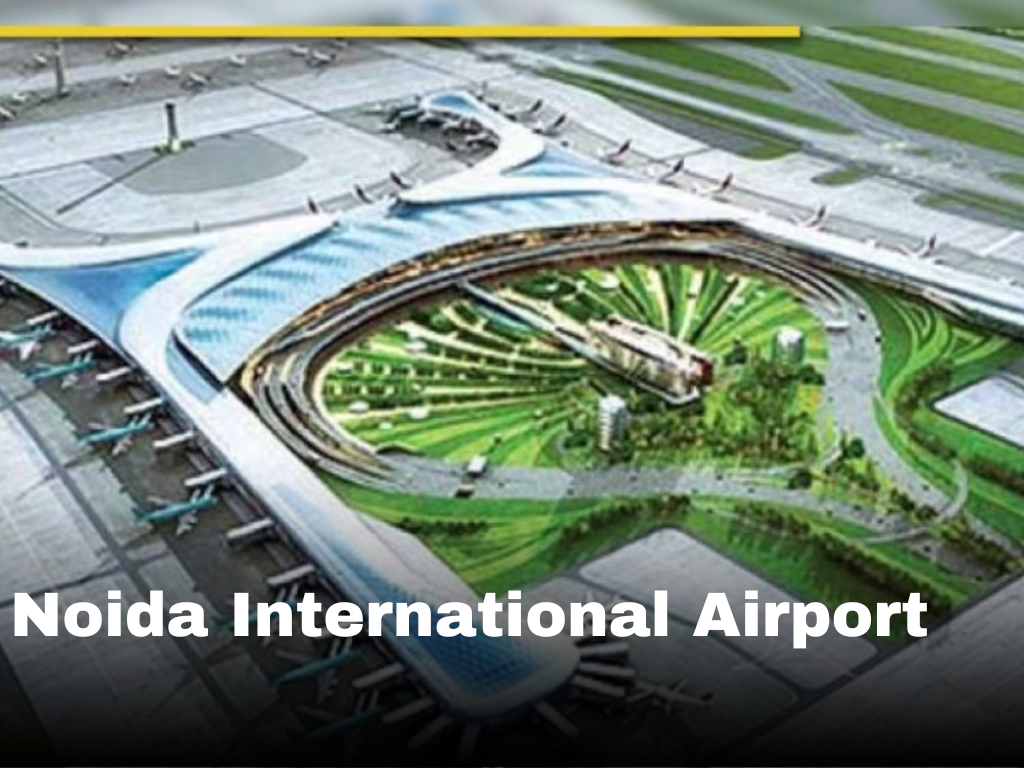Noida International AIrport or Jewar Airport will be operational by end of 2024. The idea for the airport was first proposed in 2001 but faced delays and changes in plans before finally getting underway. In 2021, PM Narendra Modi laid the foundation stone of the Noida International Airport. Here are some interesting facts about the Noida International Airport, also known as Jewar Airport.
Here are Interesting facts about the Noida International Airport

- Capacity: Once fully operational, the Noida International Airport is projected to handle around 70 to 100 million passengers annually. This significant capacity is crucial for accommodating the growing air travel demand in the Delhi-NCR (National Capital Region) area.
- Investment: The airport project is estimated to require an investment of around $3.1 billion (approximately ₹20,000 crores). It is being developed under a public-private partnership (PPP) model. With the Yamuna International Airport Private Limited (YIAPL) as the concessionaire.
- Potentially Asia’s Largest: With its ultimate planned capacity, it has the potential to become the largest airport in Asia. Upon completion, the Jewar Airport is expected to be one of the largest airports in India. It covers an area of over 5,000 hectares. It is being developed as a major international aviation hub to alleviate air traffic congestion at the existing Delhi airport.
- Economic Impact: The airport is expected to have a substantial economic impact on the region by generating employment opportunities. It will foster economic development, and attract investments in related industries such as hospitality, logistics, and tourism.
- Net-Zero Emissions: It will be India’s first airport designed to achieve net-zero emissions. Also setting a new standard for sustainable airport operations.
- Connectivity Across 4 States: The airport will enhance connectivity in the Delhi-NCR region and beyond. The Jewar airport will serve the people of UP, Delhi, Haryana, and Rajasthan. It will be linked to major highways, including the Yamuna Expressway and the upcoming Delhi-Mumbai Industrial Corridor (DMIC). As well as the proposed Delhi-Mumbai dedicated freight corridor.
- Net-Zero Emissions: It will be India’s first airport designed to achieve net-zero emissions, setting a new standard for sustainable airport operations. The airport aims to incorporate sustainable practices in its design and operations, including energy-efficient infrastructure, water conservation measures, and eco-friendly transportation options. It is expected to be certified under environmental standards such as LEED (Leadership in Energy and Environmental Design) and IGBC (Indian Green Building Council).
- Timeline: Construction work on the Jewar Airport began in 2020. The first phase of the airport is expected to be operational by 2024 end of year. Subsequent phases will be completed in stages, with full operational capacity anticipated to be achieved by the mid-2030s.
- Real Estate Price Appreciation: The Jewar Airport project is expected to have a positive impact on real estate prices in surrounding areas. The extent of price appreciation will depend on how these factors evolve over time. This economic activity can drive demand for housing and commercial properties, thereby contributing to real estate price appreciation. Also improved connectivity through road networks and public transportation projects. It enhances the attractiveness of nearby real estate for both residential and commercial purposes.
- Reduced Congestion and Improved Travel Experience: With this Noida International Airport, travelers can expect reduced congestion at existing airports. It leads to smoother check-in processes, more organized and faster security lines, and an overall great travel experience.
- Job Opportunities: The Noida International Airport is a new and developing project, so there are likely job opportunities arising.
Conclusion
For Indian readers, the Noida International Airport signifies not just a new travel gateway but a symbol of the country’s aspirations for modernization, economic growth, and global connectivity. As the airport takes shape, it holds the promise of opening new horizons for both the region and the nation. It will mark a significant chapter in India’s aviation history. The opening is expected in September 2024 with a single runway and terminal, but the overall plan includes four phases with a much larger capacity by 2030s.




Leave A Comment